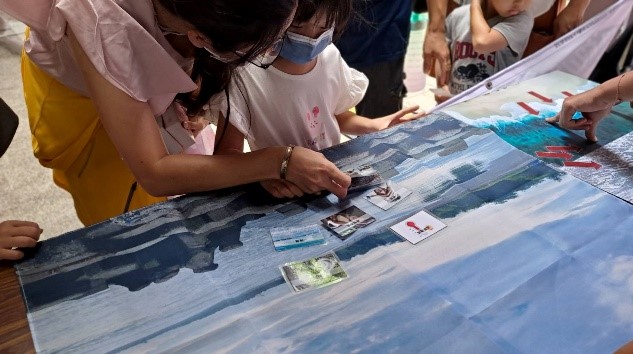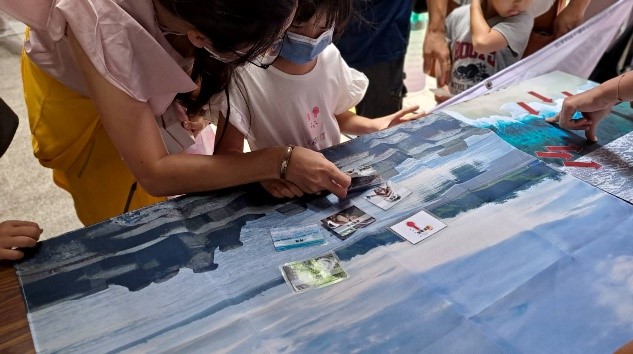Learning about rip currents to protect student’s safety during open water sports

To instill open water safety concepts among students, the Sports Administration (SA) entrusted National Kaohsiung University of Science and Technology (NKUST) with the establishment of the Open Water Sports Education Center in 2021. Since then, a series of open water safety-related programs has been promoted. Apart from providing annual subsidies to counties and cities for swimming and self-rescue teaching, the SA also organize water sports experience activities for students. Prior to these activities, a 30-minute water safety promotion session is conducted. Additionally, we employ methods such as open water safety education through digital joint learning competitions for students to build their understanding of open water safety concepts.
Drowning incidents have continued to occur in recent years. According to statistics, rip currents are the leading cause of sea drownings. Rip currents are formed when waves push toward the shore, and seawater flows back into the sea. As the water cannot flow back due to the continuing waves surging toward the shore, it moves left and right along the shoreline. This returning seawater can create a powerful force, swiftly pulling people away from the shore and out to sea. When encountering a rip current, it is crucial to first learn how to identify its location for prevention and, secondly, acquire self-rescue techniques.
The Open Water Sports Education Center places a strong emphasis on water safety promotion for students. Before participating in water sports experience activities, a 30-minute session is dedicated to water safety. This session covers various aspects, including assessing environmental risk factors before engaging in water activities, the correct way to wear life jackets, and important considerations when participating in water sports. Additionally, the center conducts online digital joint learning competitions for students. Presently, over 160,000 individuals have taken part in online water safety knowledge tasks. Furthermore, the center promotes open water safety education and teaching packages that incorporate scenarios involving rip currents and other water-related accidents into board games. This approach allows students to grasp self-rescue methods, enhancing their understanding and competency in water safety.
"In the activities related to water safety promotion, the SA also utilises straightforward image selection assessments, enabling the public to verify whether they have completed self-assessment and environmental assessment before entering the water. They also educate individuals on using the naked eye to identify potential locations of rip currents, thereby enhancing public awareness of the perilous currents beneath the waves.
The SA stated that rip currents are invisible killers in open water. When playing in the water at the beach, you should first observe the terrain and sea surface conditions. Do not rush into the water. If you have the correct concepts of self-rescue and are cautious, you can keep yourself well away from danger.


